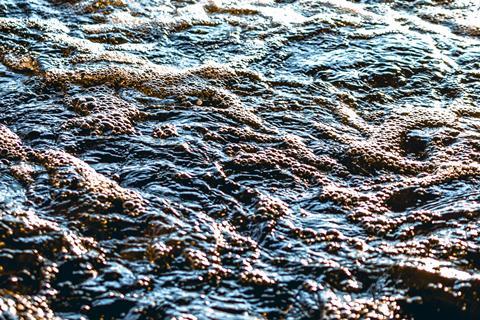A versatile new foam material could significantly reduce health care-related infections caused by implanted medical devices - or drastically improve cleanup efforts following environmental disasters like oil spills.

Like a spongy Swiss Army knife, the porous three-dimensional ’superfoam’ developed by researchers at University of Georgia is water repellent - meaning it resists blood, microbes and proteins, while also exhibiting antimicrobial and oil-water separation properties. Its versatility, functionality and relatively inexpensive production costs could make it a valuable resource for future clinicians and environmental remediation professionals alike.
“Making a multifunctional and versatile surface is an extremely challenging task,” said Hitesh Handa, an associate professor in UGA’s School of Chemical, Materials and Biomedical Engineering.
“You can find a surface that is only antimicrobial, or you can find one that can only prevent blood clotting. To be able to fabricate materials that are anticlotting, antimicrobial and antifouling is a significant improvement on current standards.”
Foam and filler
The material is a coarse foam with a pair of added fillers: hydrophobic (or, water repellant) electrically conductive graphene nanoplatelets and hydrophobic bactericidal copper microparticles. In addition to repelling water, their inclusion created a coarse surface that facilitated high oil adsorption capacity and the copper, a known toxin to bacterial cells, added antimicrobial properties to the surface itself.
Using E. coli as a test bacterium, researchers found that the material resulted in a 99.9% bacterial reduction over a simple polymer. While that doesn’t mean that all bacteria had been removed from the solution, it is a significant improvement that Handa thinks could improve health outcomes for many of the more than 500,000 patients who endure health care-related infections from medical implants each year.
“Current medical devices are prone to contamination,” Handa said. “When you put any medical device into the body, proteins are the first thing to stick to a surface, and they act like a glue that allows blood or bacteria to adhere. So, if we can stop the protein adsorption, half the battle is won.”
Likewise, a series of tests demonstrated the material’s high capacity for separating water and other oil-based pollutants. By placing a 3D sponge made from this surface into a variety of water mixtures—chloroform, hydrochloric acid and other organic particles—researchers were able to show its ability to absorb and remove the organic pollutants from the water, while also killing bacteria in the water itself.
Lotus effect
At scale, the material could prove impactful in environmental cleanup from oil spills or other similar scenarios.
The idea follows a phenomenon called the lotus effect, which refers to self-cleaning properties that are a result of ultrahydrophobicity exhibited by the lotus flower. This has long been a model for the fabrication of superhydrophobic surfaces that have proven effective at cleaning, antifogging and antifouling. Past design strategies, however, have fallen short due to a lack of functionality and scalability.
“The versatility is the key here,” said Mark Garren, a co-author on the paper and doctoral student in Handa’s lab. “The multifunctional properties are what inspired this, then developing that and showcasing all of its abilities.”
Going forward, the primary goal for researchers is to apply the surface to medical devices and demonstrate its effectiveness before moving on to non-human animal trials and, eventually, testing in humans. Facing less rigorous safety standards, the surface may be more readily deployable in the environmental cleanup use cases.
This research, titled “Superhydrophobic and Conductive Foams with Antifouling and Oil-Water Separation Properties” was published in Applied Materials & Interfaces.







No comments yet